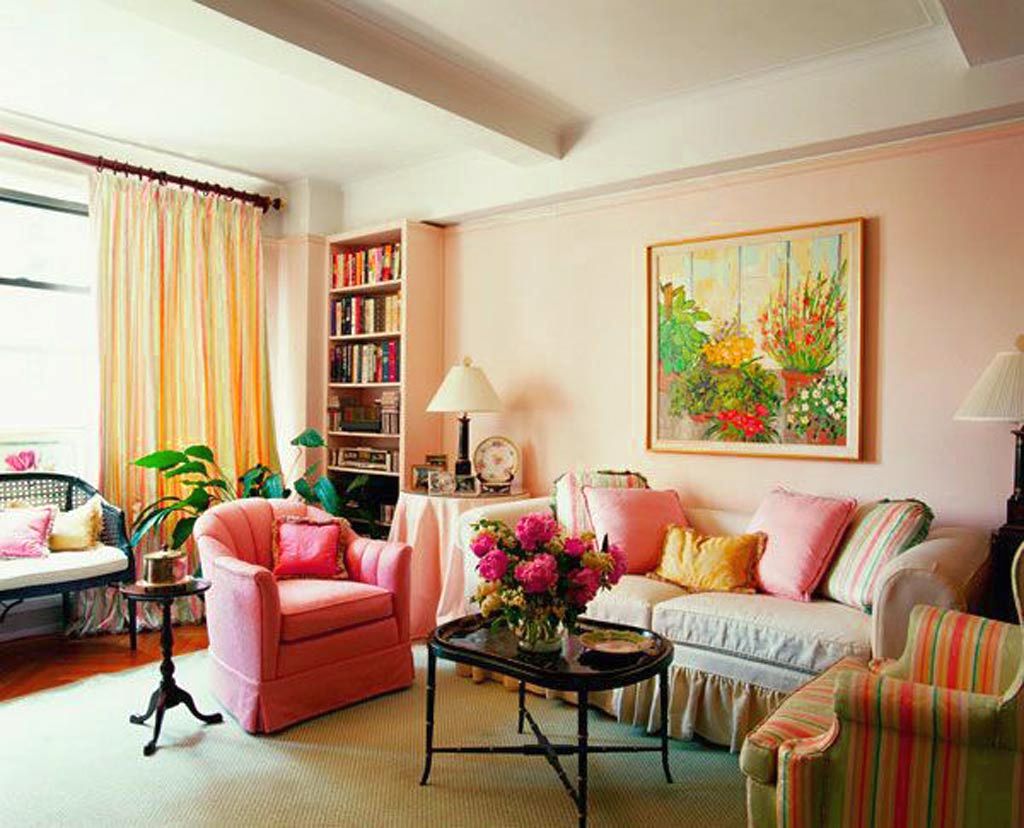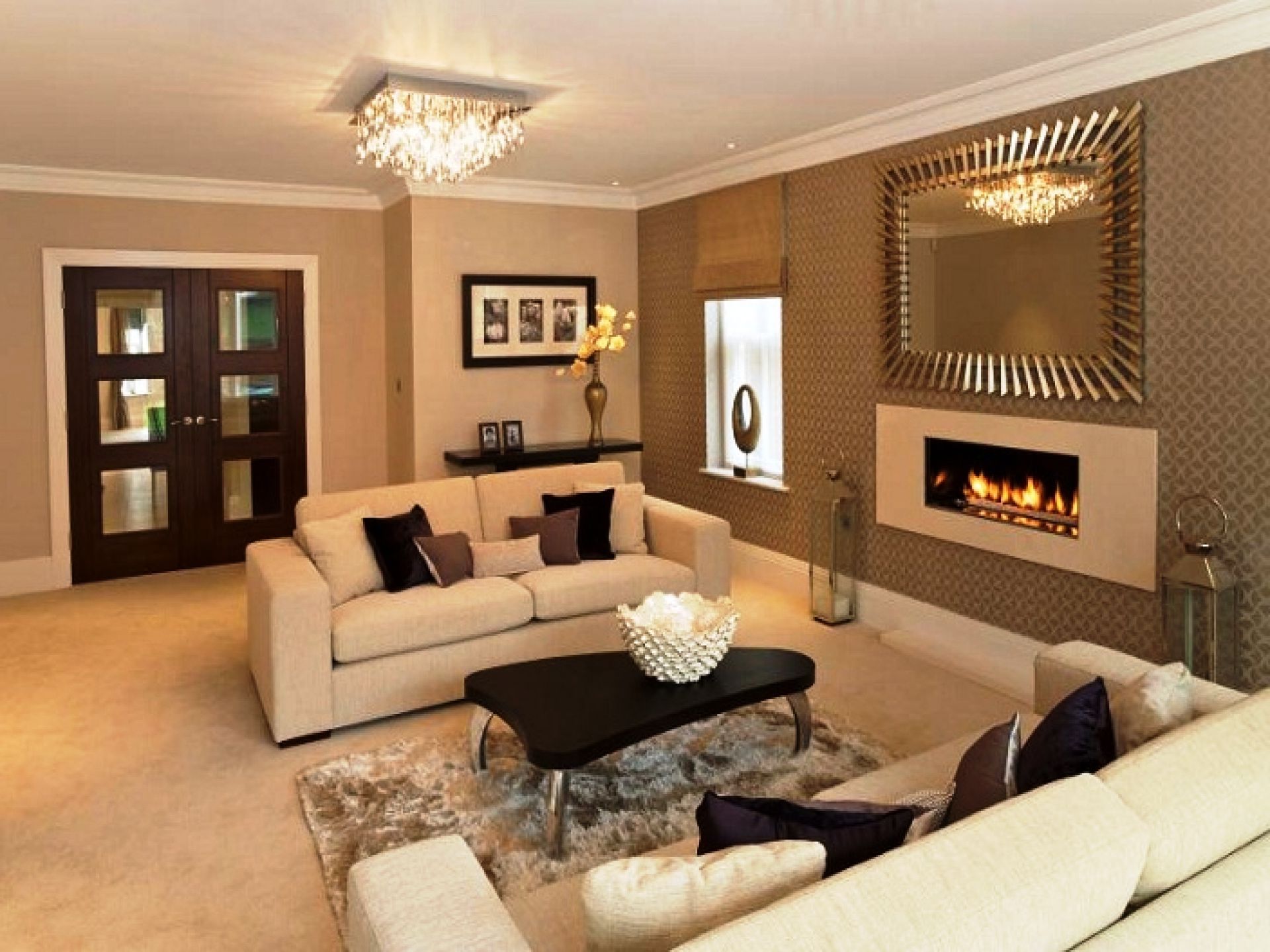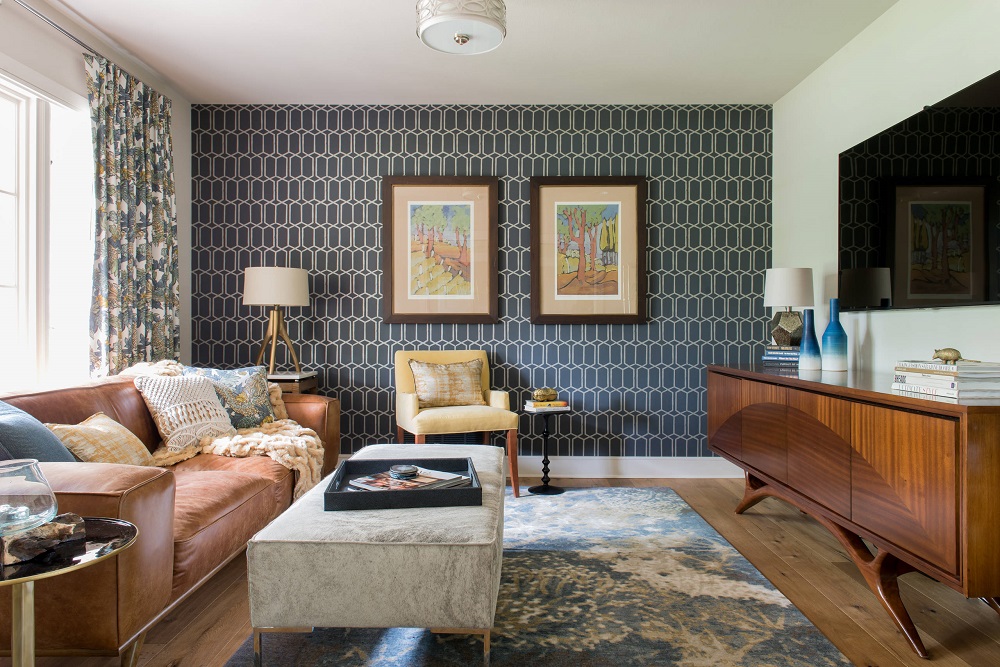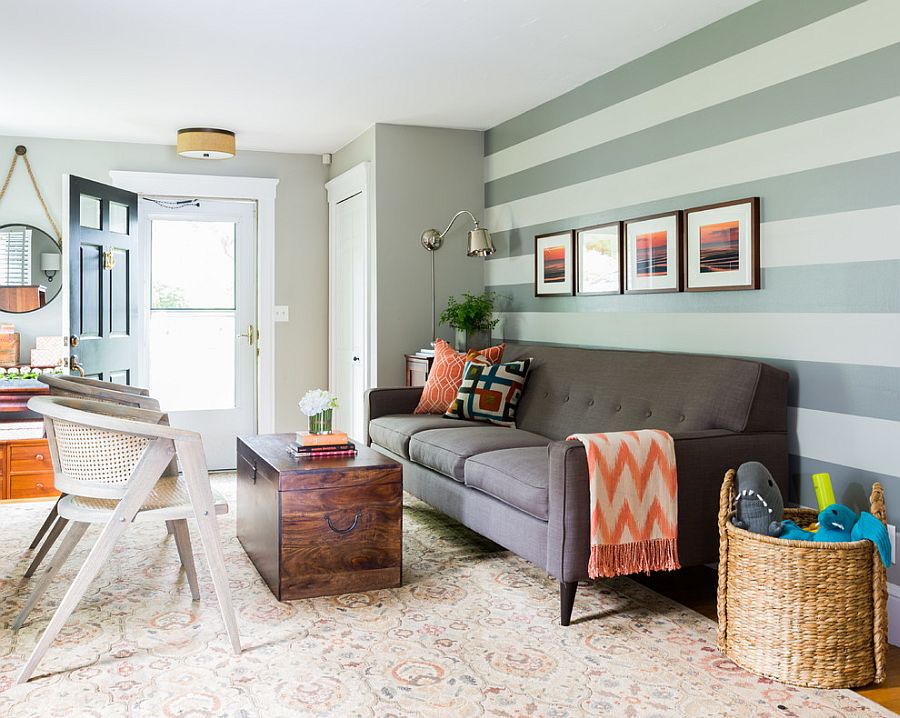If you want a timeless and versatile look for your living room walls, consider using neutral colors. Shades of white, beige, gray, and taupe are all great options that can create a calming and sophisticated atmosphere in your living room. These colors are also easy to pair with different furniture and decor styles, making it easier for you to update the look of your living room in the future without having to repaint the walls. Neutral colors are also perfect for small living rooms, as they can make the space appear larger and more open. You can add depth and interest to your neutral walls by incorporating different textures and patterns through textiles, such as throw pillows, rugs, and curtains.Neutral color schemes for living room walls
For a cozy and inviting living room, consider using warm colors such as shades of red, orange, and yellow. These colors can create a welcoming and energetic atmosphere, perfect for socializing and entertaining guests. You can choose to go bold with a rich red accent wall or use earthy orange tones for a more subtle effect. Keep in mind that warm colors can make a room feel smaller, so it's best to use them in larger living rooms to avoid creating a cramped space. You can balance out the warmth by incorporating cool colors, such as shades of blue or green, through decor and furniture pieces.Warm color palettes for living room walls
If you want a more calming and serene atmosphere in your living room, consider using cool colors. Shades of blue, green, and purple can create a peaceful and relaxing space, perfect for unwinding after a long day. You can choose to go with a monochromatic color scheme, using different shades of one color, for a cohesive and soothing look. Blue is known for its calming effects, while green can promote a sense of balance and harmony. Purple is often associated with luxury and creativity, making it a great choice for a unique and sophisticated living room. You can add warmth and contrast to your cool walls by incorporating warm-colored accents, such as yellow or orange.Cool color combinations for living room walls
If you want to bring a natural and organic feel to your living room, consider using earth tones. These colors are inspired by nature, and they can create a warm and inviting atmosphere in your living room. Shades of brown, green, and beige are all great options for earth tone walls. You can add interest to your earth tone walls by using different textures, such as wood, woven materials, and natural stone. This will bring an element of nature into your living room and create a cozy and inviting space for you and your guests.Earth tone ideas for living room walls
A monochromatic color scheme can create a sophisticated and elegant look in your living room. This design concept involves using different shades of one color, such as different tones of blue or gray. This creates a cohesive and harmonious look, perfect for a modern and minimalist living room. To avoid creating a dull and flat look, make sure to incorporate different textures and patterns in your monochromatic living room. This will add depth and interest to your walls and make them stand out in a subtle and stylish way.Monochromatic color schemes for living room walls
For those who want to make a statement with their living room walls, bold and vibrant colors are the way to go. Shades of yellow, red, and purple can add a pop of color and personality to your living room. These colors can create a fun and energetic atmosphere, perfect for those who love to make a bold statement. When using bold colors, it's important to balance them out with neutral or muted tones. This will prevent your living room from feeling overwhelming or chaotic. You can also use these bold colors in smaller doses, such as through accent walls or statement pieces, for a more subtle effect.Bold and vibrant colors for living room walls
If you want a softer and more subtle look for your living room, consider using pastel colors. These colors are light and airy, and they can create a calming and soothing atmosphere in your living room. Shades of pink, lavender, and mint are all great options for pastel walls. Pastel colors work well in both large and small living rooms, and they can be easily paired with different decor styles. You can also mix and match different pastel colors for a playful and whimsical look, perfect for a cozy and inviting living room.Pastel color options for living room walls
If you want to add drama and visual interest to your living room, consider using contrasting colors for your walls. This involves using colors that are directly opposite each other on the color wheel, such as blue and orange or green and red. Contrasting colors can create a bold and eye-catching look, perfect for those who want to make a statement with their living room walls. To avoid creating an overwhelming look, make sure to balance out the contrasting colors with neutral or muted tones through furniture and decor.Contrasting color ideas for living room walls
Similar to contrasting colors, complementary colors can also create a striking and visually appealing look in your living room. These colors are located opposite each other on the color wheel, but they have similar undertones, creating a harmonious and balanced look. Shades of purple and yellow or blue and orange are great examples of complementary colors. You can use complementary colors to create a bold and vibrant living room, or you can opt for softer and more muted shades for a more subtle effect. Make sure to balance out the complementary colors with neutral or muted tones to avoid overwhelming the space.Complementary color schemes for living room walls
If you want to add a pop of color or create a focal point in your living room, consider using an accent wall. This involves painting one wall in a different color or pattern than the rest of the walls in the room. You can choose a bold and vibrant color, a subtle and muted tone, or even a patterned wallpaper for your accent wall. An accent wall can add depth and interest to your living room, and it's a great way to incorporate your favorite color without overwhelming the space. You can also use an accent wall to highlight a specific area in your living room, such as a fireplace or a piece of artwork. Whether you prefer a neutral and timeless look or a bold and vibrant one, there are plenty of color options to choose from for your living room walls. Consider the size and layout of your living room, as well as your personal style and preferences, to determine which color scheme will work best for your space. With the right color on your walls, you can create a welcoming and stylish living room that reflects your personality and makes you feel at home.Accent wall color choices for living room walls
The Importance of Color in Designing Your Living Room Walls

Understanding Color Psychology
 When it comes to designing our living spaces, color plays a vital role in creating a comfortable and inviting atmosphere. The colors we choose for our walls can greatly impact our mood and emotions, as well as the overall aesthetic of the room. This is why it's important to carefully consider the colors we use in our living room walls, as they can set the tone for the entire space.
Color psychology
is the study of how different colors can affect our emotions and behaviors.
Warm colors
, such as red, orange, and yellow, are known to evoke feelings of energy and warmth. They can also create a sense of intimacy and coziness, perfect for a living room where we gather with friends and family.
Cool colors
, such as blue, green, and purple, on the other hand, can create a calming and relaxing atmosphere. These colors are often associated with nature and can bring a sense of tranquility to a room.
When it comes to designing our living spaces, color plays a vital role in creating a comfortable and inviting atmosphere. The colors we choose for our walls can greatly impact our mood and emotions, as well as the overall aesthetic of the room. This is why it's important to carefully consider the colors we use in our living room walls, as they can set the tone for the entire space.
Color psychology
is the study of how different colors can affect our emotions and behaviors.
Warm colors
, such as red, orange, and yellow, are known to evoke feelings of energy and warmth. They can also create a sense of intimacy and coziness, perfect for a living room where we gather with friends and family.
Cool colors
, such as blue, green, and purple, on the other hand, can create a calming and relaxing atmosphere. These colors are often associated with nature and can bring a sense of tranquility to a room.
Choosing the Right Color for Your Living Room Walls
 Now that we understand the impact of color on our emotions, how do we choose the right color for our living room walls? The first step is to consider the
overall style and theme
of your living room. Are you going for a modern and sleek look? Or do you prefer a more traditional and cozy feel? The color of your walls should complement the style and theme you have in mind.
Another important factor to consider is the
size and lighting
of your living room. If your living room is small, using light and neutral colors can help create the illusion of a larger space. On the other hand, if your living room is large and receives a lot of natural light, you have more freedom to experiment with bolder and darker colors.
Lastly, it's important to think about
personal preference
. While color psychology can provide a general understanding of how colors can affect our emotions, everyone has their own unique reactions to colors. Choose a color that you personally find appealing and will make you feel comfortable in your living space.
Now that we understand the impact of color on our emotions, how do we choose the right color for our living room walls? The first step is to consider the
overall style and theme
of your living room. Are you going for a modern and sleek look? Or do you prefer a more traditional and cozy feel? The color of your walls should complement the style and theme you have in mind.
Another important factor to consider is the
size and lighting
of your living room. If your living room is small, using light and neutral colors can help create the illusion of a larger space. On the other hand, if your living room is large and receives a lot of natural light, you have more freedom to experiment with bolder and darker colors.
Lastly, it's important to think about
personal preference
. While color psychology can provide a general understanding of how colors can affect our emotions, everyone has their own unique reactions to colors. Choose a color that you personally find appealing and will make you feel comfortable in your living space.
Conclusion
/Neutrallivingroom-GettyImages-568518365-5a6260a87d4be80036ac6b0c.jpg) In conclusion, choosing the right color for your living room walls is a crucial aspect of interior design. By understanding color psychology, considering the overall style and theme, and taking into account the size and lighting of your living room, you can create a space that is not only visually pleasing but also promotes the desired mood and atmosphere. So go ahead and add a splash of color to your living room walls, and see the difference it can make.
In conclusion, choosing the right color for your living room walls is a crucial aspect of interior design. By understanding color psychology, considering the overall style and theme, and taking into account the size and lighting of your living room, you can create a space that is not only visually pleasing but also promotes the desired mood and atmosphere. So go ahead and add a splash of color to your living room walls, and see the difference it can make.






/scandinavian-living-room--19-10--949108480-5c60947746e0fb00017dd27d.jpg)







/GettyImages-1166439205-55e4b070c78f40f58e4f785546eea0fb.jpg)











:max_bytes(150000):strip_icc()/Litchfield_BeresfordHill_025-5b89787fc9e77c00258aa53c.jpg)



/169789002-58a723d63df78c345b930ec6.jpg)













:max_bytes(150000):strip_icc()/KZ8O0W-5abd0d4fa18d9e0037e877ab.jpg)























































/living-room-accent-walls-4135943-03-ccb81c14f95148e884228f03811e7092.jpg)


/Deep-Blue-Accent-Wall-58e42e935f9b58ef7e6e0b8b.png)






:max_bytes(150000):strip_icc()/Litchfield_BeresfordHill_025-5b89787fc9e77c00258aa53c.jpg)

